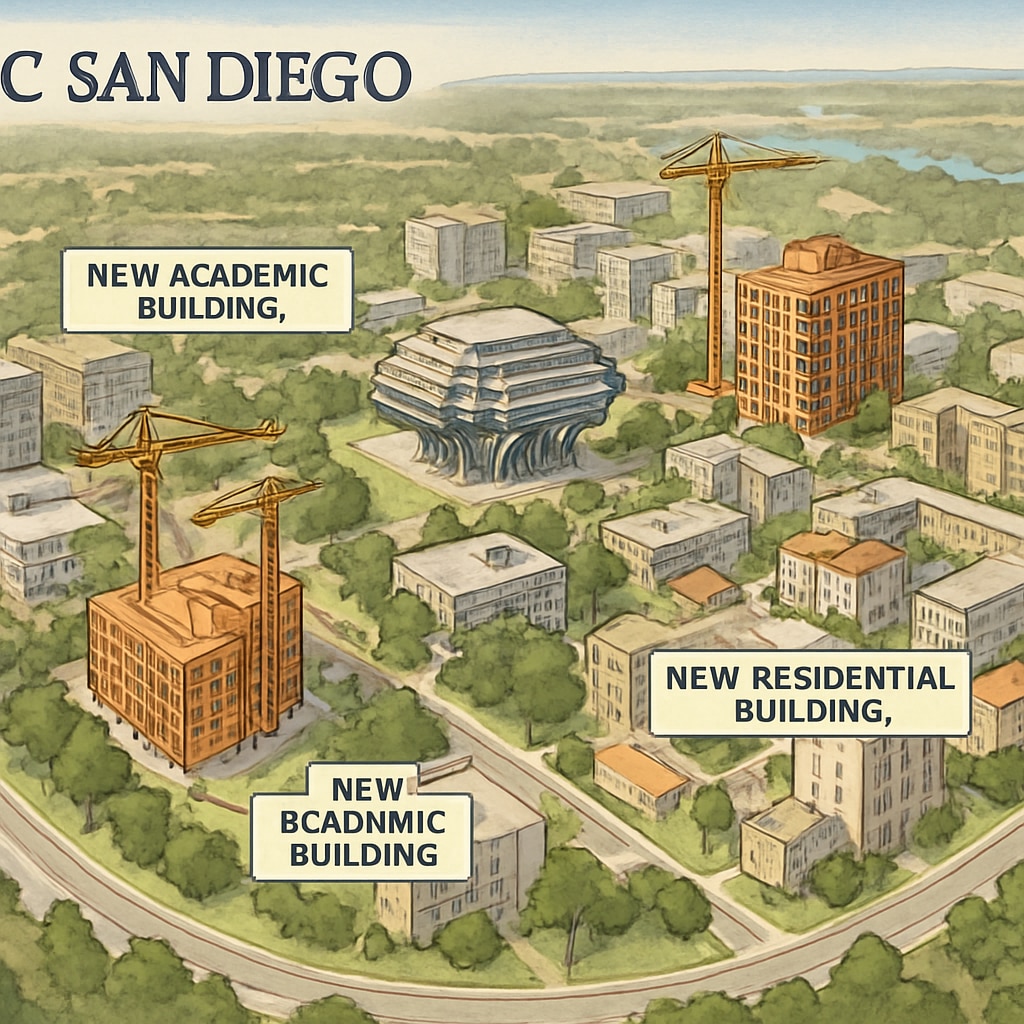UC San Diego (UCSD) has announced an ambitious plan to expand its enrollment to 56,000 students by 2040. This bold initiative represents one of the largest expansions of its kind in higher education and aims to address both the growing demand for quality university education and the broader challenges in the education sector. The ripple effects of this expansion will extend beyond the university itself, influencing the K-12 education ecosystem and setting the stage for transformative changes in how students are prepared for college and careers.
Transformative Goals of UC San Diego’s Expansion
The cornerstone of UC San Diego’s expansion plan is its commitment to accessibility and innovation. By significantly increasing its student body, the university aims to meet the surging demand for higher education in California, where population growth and economic factors have made access to public universities increasingly competitive. The expansion also aligns with UCSD’s vision of becoming a hub for cutting-edge research, interdisciplinary collaboration, and community engagement.
To accommodate this growth, UCSD plans to invest heavily in infrastructure, including new academic buildings, residential facilities, and enhanced digital learning platforms. The university’s leadership has emphasized that this growth will not compromise the quality of education or research but will instead enhance opportunities for all students.

Implications for K-12 Education
The impact of UCSD’s enrollment growth will not be confined to higher education. The university’s expansion has the potential to reshape the K-12 education landscape in several significant ways:
- Increased Collaboration: UCSD is likely to deepen its partnerships with local K-12 schools, providing teacher training programs, advanced placement (AP) resources, and STEM (science, technology, engineering, and math) initiatives to better prepare students for university-level education.
- Curriculum Alignment: As enrollment increases, UCSD may work closely with K-12 educators to ensure that high school curricula align with university expectations, reducing the need for remedial courses and improving college readiness.
- Equity in Access: The expansion could lead to targeted outreach programs for underrepresented communities, ensuring that more students from diverse backgrounds have the opportunity to pursue higher education.
These changes will not only help bridge the gap between secondary and postsecondary education but also create a pipeline of students who are better equipped to succeed in college and beyond.

Broader Impacts on Higher Education
UC San Diego’s expansion plan could serve as a model for other universities facing similar challenges. By demonstrating how institutions can grow while maintaining academic excellence, UCSD is likely to influence policies and practices across the higher education sector. For example:
- Innovative Teaching Methods: The scale of this expansion will necessitate advancements in teaching technology, such as hybrid classes and AI-driven personalized learning systems, which could be adopted by other universities.
- Economic Growth: The increased enrollment will contribute to the local economy by creating jobs, boosting housing demand, and fostering partnerships with industries in San Diego.
- Global Influence: As UCSD grows, its reputation as a research and education leader will likely attract more international students and faculty, enriching the campus’s diversity and global connections.
These broader impacts underscore the significance of UCSD’s initiative, not just for the university but for the entire educational ecosystem.
Challenges and Considerations
While the expansion plan is visionary, it also comes with challenges that need to be addressed. For instance, the rapid growth in enrollment could strain existing resources, such as faculty availability and classroom space, if not managed effectively. Additionally, maintaining affordability and accessibility for all students will require careful financial planning and support from state and federal funding programs.
Another consideration is the environmental impact of construction and increased campus activity. UCSD has pledged to prioritize sustainability in its development plans, incorporating green building practices and renewable energy solutions to minimize its ecological footprint.
Conclusion: A Vision for the Future
UC San Diego’s expansion plan is more than just a numbers game; it is a bold vision for the future of education. By increasing its enrollment to 56,000 students by 2040, UCSD is not only addressing the immediate needs of higher education but also paving the way for a more integrated and equitable educational system from K-12 to university. As this initiative unfolds, it will serve as a blueprint for other institutions seeking to balance growth with excellence, accessibility, and sustainability.
In the words of UCSD’s leadership, the expansion represents “an investment in the future of our students, our community, and our world.” As such, it is a plan that deserves close attention from educators, policymakers, and the public alike.
Readability guidance: The content is structured with clear headings and concise paragraphs to ensure readability. Lists have been used to summarize key points, and overuse of long sentences and passive voice has been avoided. Transition words like “however,” “in addition,” and “for example” have been employed to enhance flow and coherence.


